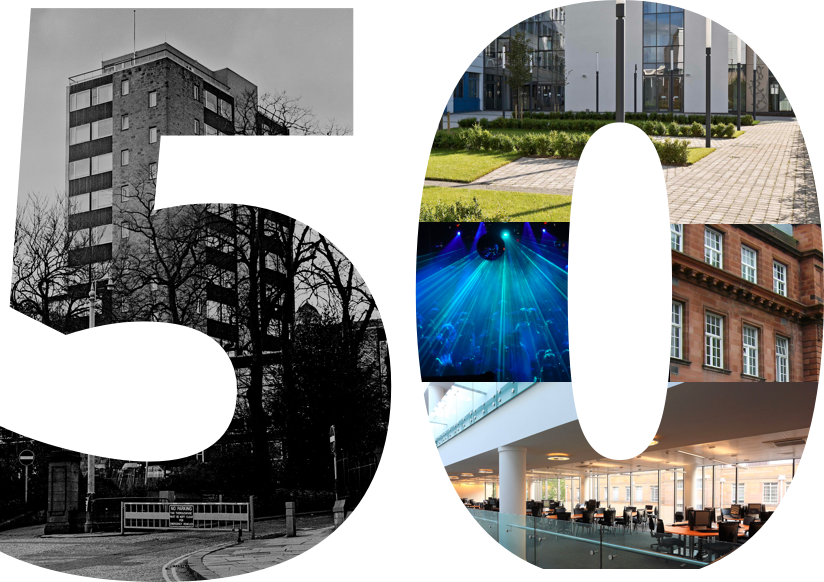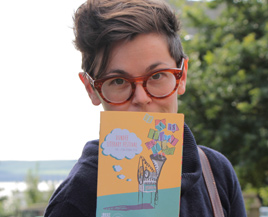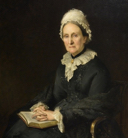
-
Celebrations begin to commemorate 50 years of the University of Dundee
2017 -
The University of Dundee becomes a fully independent institution under the terms of the Royal Charter.
1967 -
Ordinances issued in 1897 made University College form part of St Andrews. and establish a Faculty of Medicine.
1897 -
The Deed formally creating University College Dundee was signed by founders Miss Mary Ann Baxter and her cousin Dr John Boyd Baxter.
1881
Spacecraft technology research
-
date
Fri, 10 Mar 2017
-
Running Time
00:04:22
The Space Technology Centre at the University of Dundee is at the forefront of pioneering research into spacecraft technology.
Episode Transcript
Space. The final frontier. But not for the University of Dundee. Their world leading research on spacecraft technology has been going on in Computing at the University of Dundee for over a decade. The Space Technology Centre at the University of Dundee works with everybody from the European Space Agency to NASA, as well as the Japan Aerospace eXploration Agency and many more in between.
Dozens of satellites and spacecraft are launched each year and sent into space. They do different jobs such as exploring the solar system, studying the universe, watching the earth and, more mundanely, providing us with ways of communicating.
Usually these spacecraft and satellites are not manned and have to handle masses of data – storing it, processing it, moving it around. It used to be that each space organisation had their own, often inefficient way of doing this, until the University of Dundee’s team invented SpaceWire.
SpaceWire is way of connecting high-speed links and networks on spacecraft, connecting instruments, mass-memory and other on-board systems – just think of it in the same way your usb cable connects your phone to your computer.
SpaceWire has already been used in deployed in missions by the world’s leading space programs. It was used in mission to form a 3D model of the stars in our galaxy, the Milky Way. It is used onboard Europe’s Sentinel series of Earth Observation spacecraft, providing environmental scientists with crucial information about our planet. It will be integrated into the ESA’s Euclid space telescope, which will map the distribution of dark matter in the Universe.
SpaceWire will also be key in the joint European and Japanese space mission which will explore the planet Mercury - the smallest and least explored planet in our solar system – via an unmanned space probe called Bepicolombo that is due to orbit Mercury in January 2022.
As well as SpaceWire, the Space Technology Centre has been working on technology for planetary landers, spacecraft that land on the surface of other planets. The main area of research interest is the entry, descent and landing phase which is the most hazardous for any lander. In particular research on autonomous navigation and piloting techniques are studied along with tools for supporting this research.
The Space Technology Centre also researched and developed the PANGU - planet and asteroid natural-scene generation utility - which is able to generate realistic artificial planet surfaces inside a computer that are representative of the Moon, Mars, Mercury or asteroids.
Under the same umbrella comes the Satellite Receiving Station which collects data from several Earth observation satellites and distributes it to UK environmental scientists.
The Satellite Station has been operational since 1976. It has a data archive extending back to 1978 with over 100,000 recordings collected from a range of polar orbiting satellites providing coverage of Europe and the North Atlantic areas.
Data from satellites are also received on a daily basis for full global coverage. The station has traditionally received images from US and European satellites and the collected data has been used in areas such as meteorology, vegetation, snow and ice, volcano and earthquake research.
Peggy Hughes

Peggy manages Literary Dundee, a University of Dundee initiative that celebrates books, reading and writing. Literary Dundee was included in the List Magazine's Hot 100, their annual celebration of the figures who've contributed most to the cultural landscape during the year. She has worked for the University since 2013 and before that worked with literary organisations such as the Scottish Poetry Library and the Edinburgh UNESCO City of Literature Trust. Peggy works with books in her spare time too - interviewing authors at events and festivals, talking about books on the radio and other platforms. She sits on the board of the Craigmillar Literacy Trust and Highlight Arts, and when not reading or talking about books, enjoys walks, Scrabble, tweed, singing tunelessly, and cake. Peggy was listed at number 51 in the Courier's Impact 100 2016 (their 'annual review of the people who have done the most — good or bad — to affect life in Courier country') for services to Dundee's cultural life.
-
Celebrations begin to commemorate 50 years of the University of Dundee
2017 -
The University of Dundee becomes a fully independent institution under the terms of the Royal Charter.
 1967
1967 -
Ordinances issued in 1897 made University College form part of St Andrews. and establish a Faculty of Medicine.
1897 -
The Deed formally creating University College Dundee was signed by founders Miss Mary Ann Baxter and her cousin Dr John Boyd Baxter.
 1881
1881